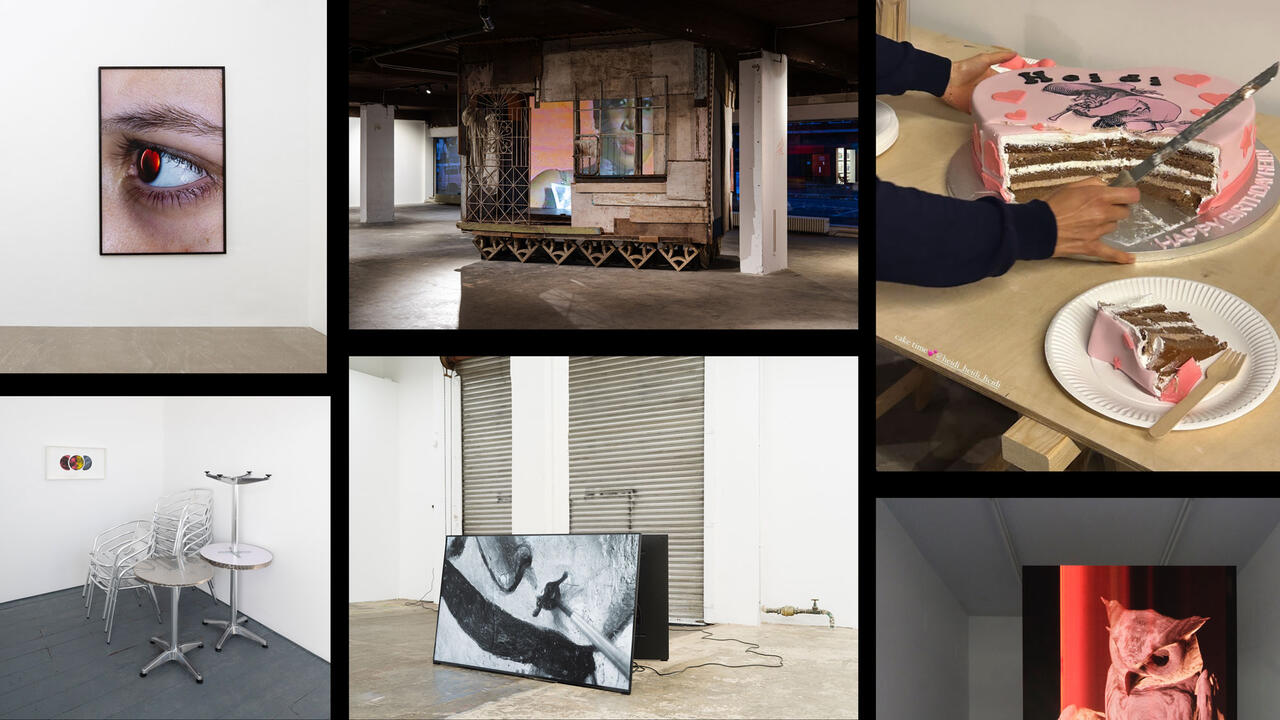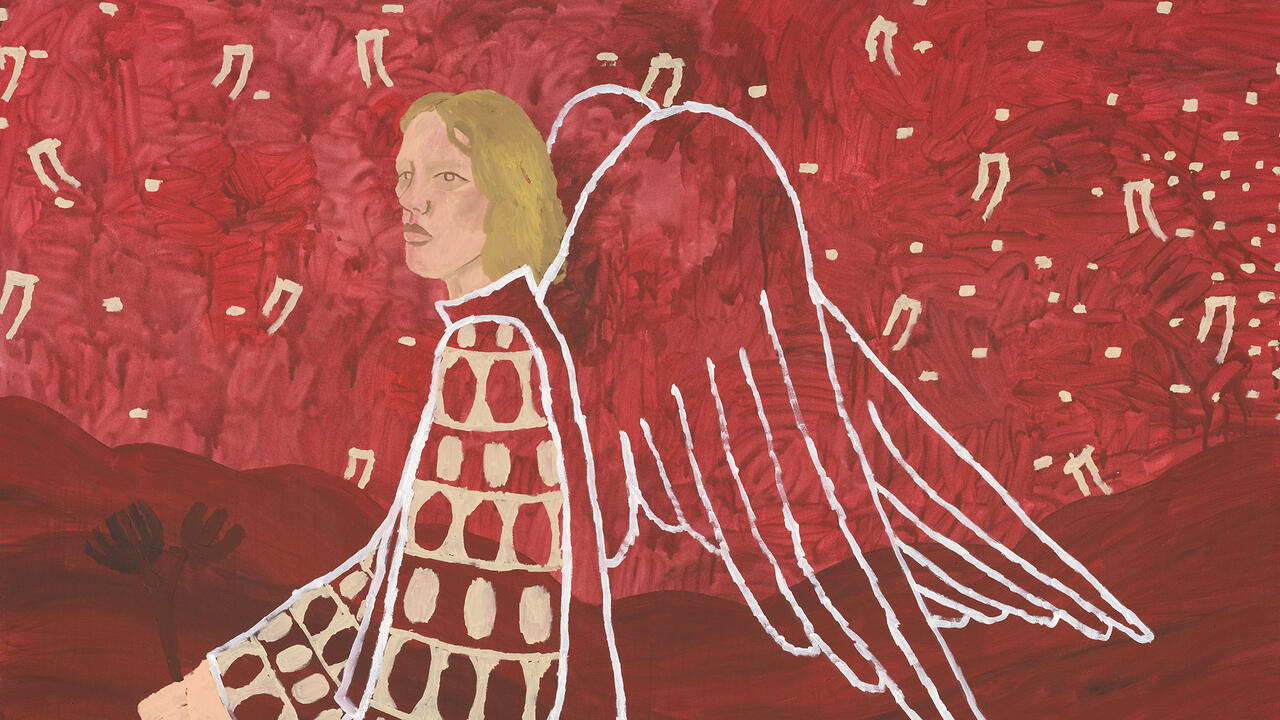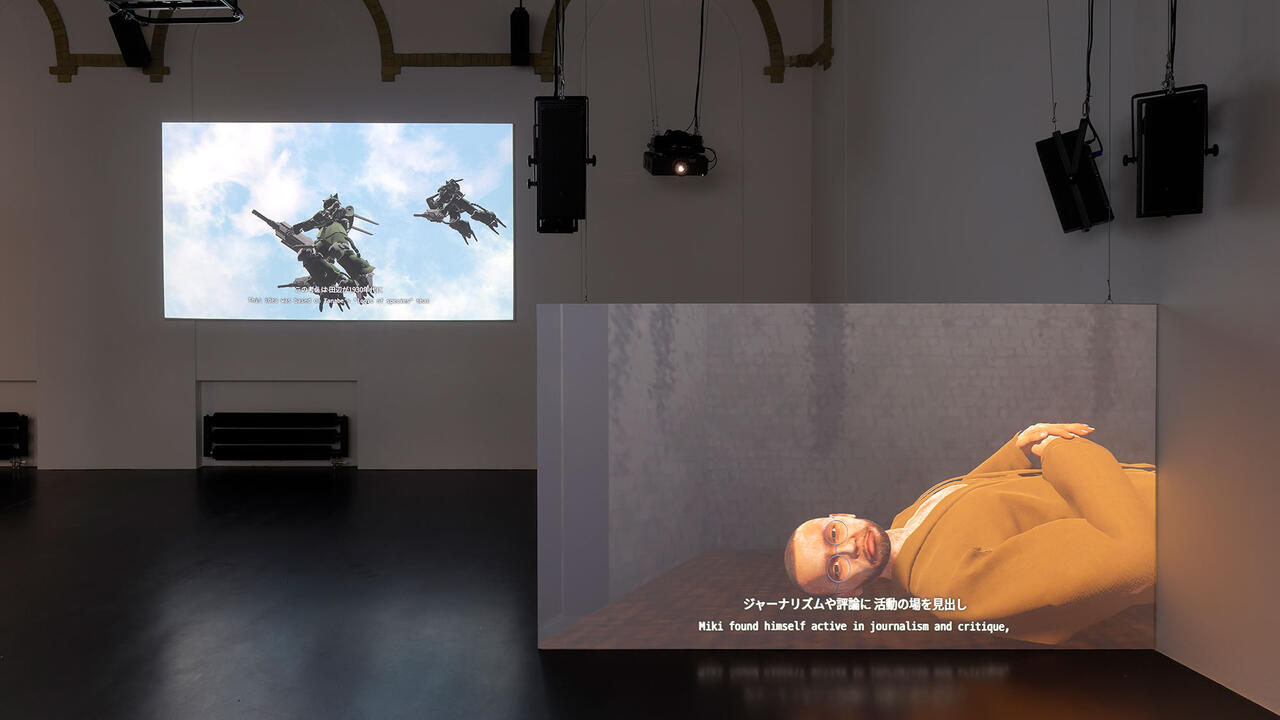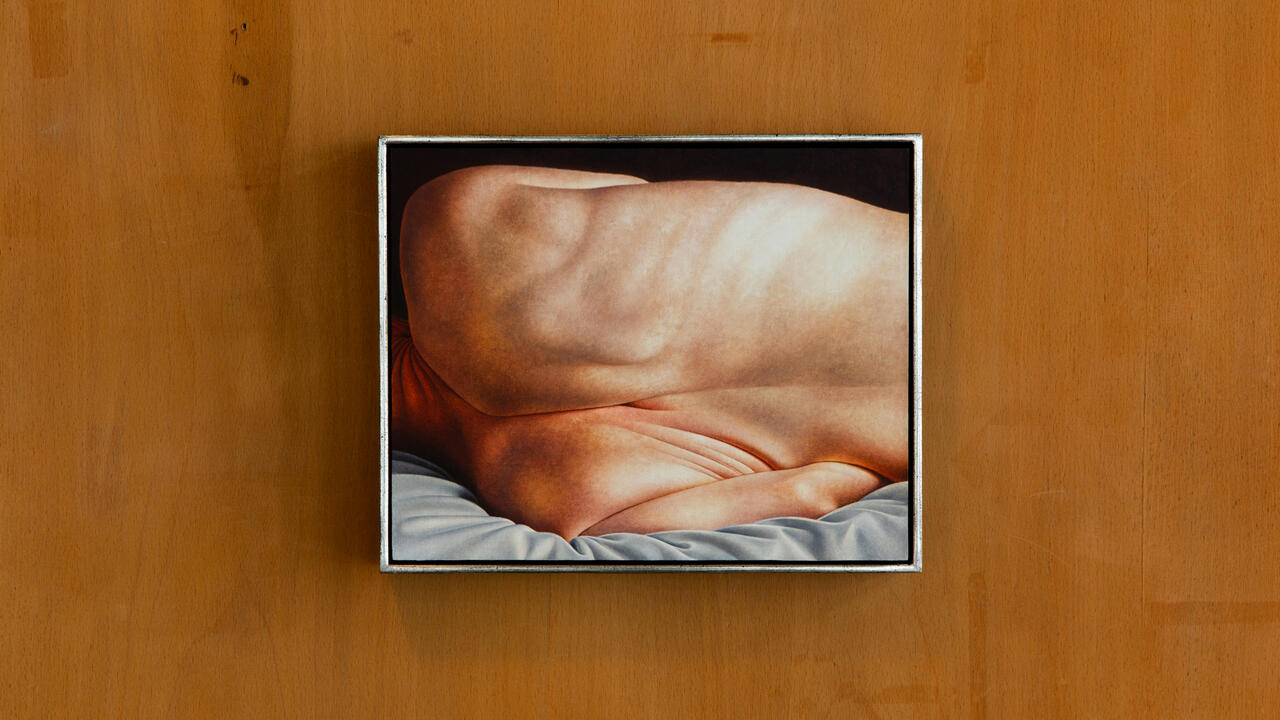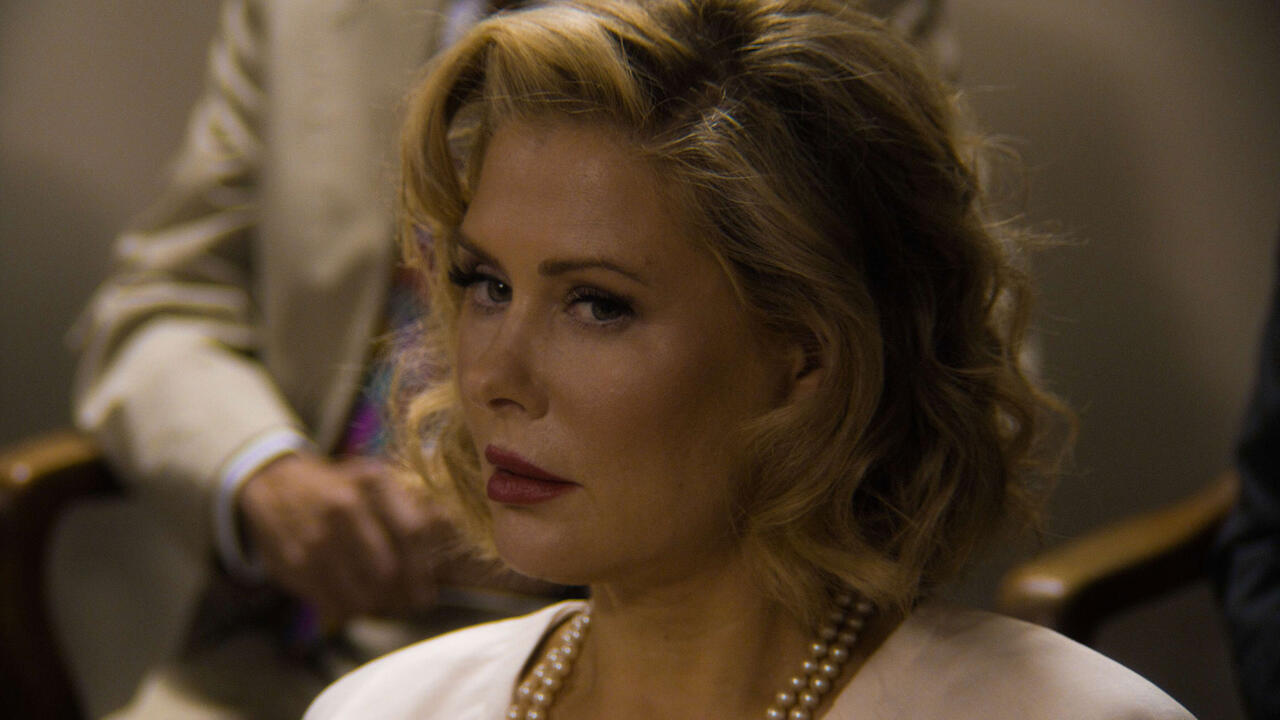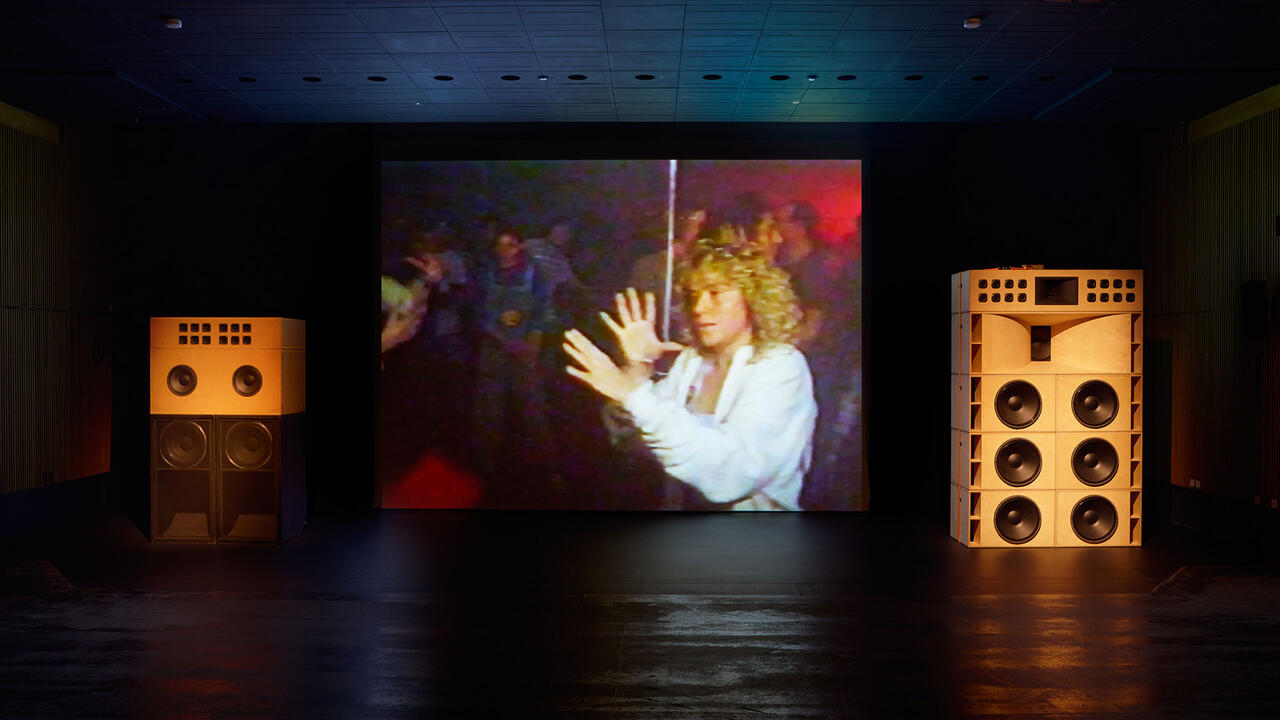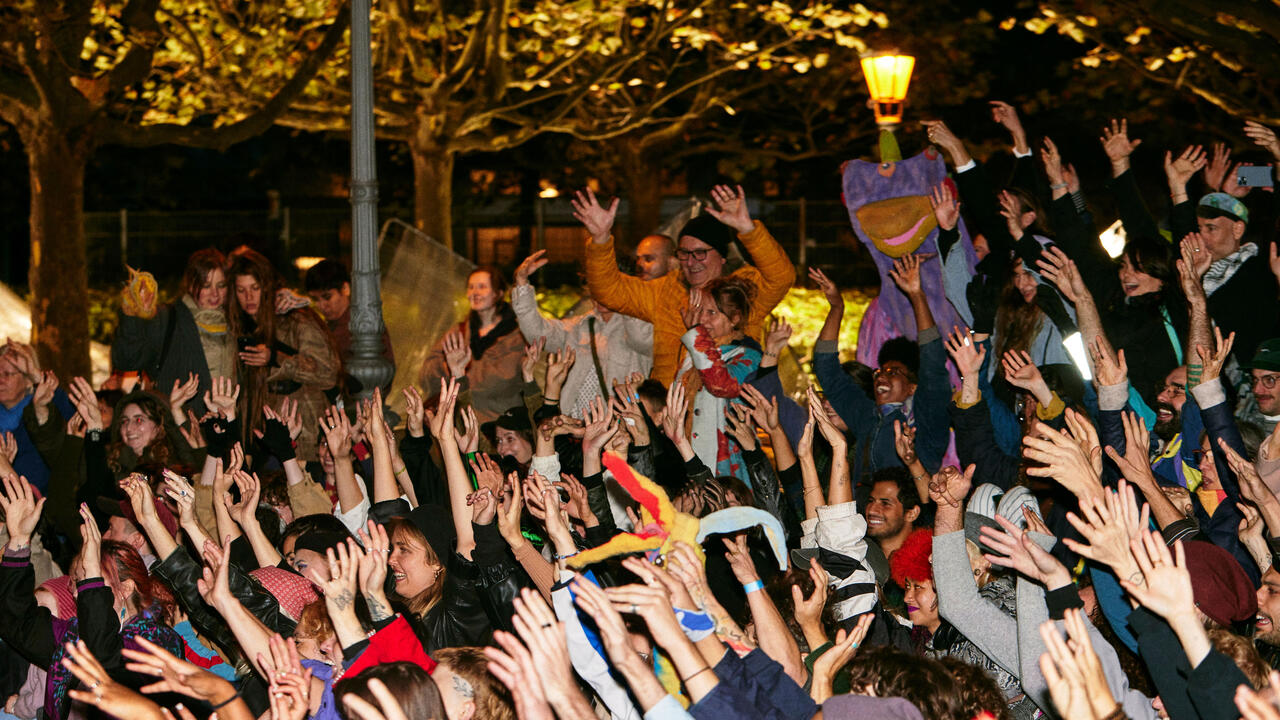La Ribot
Various venues, Berlin, Germany
Various venues, Berlin, Germany

The shift from the performance space to the gallery was organic for La Ribot, considered to be one of the first to sell her performances as intangible artworks. And as is shown in ‘Occuuppatiooon!’, the Spanish choreographer’s retrospective, organized by Tanz im August and split between Galerie Barbara Weiss and three performance venues (Sophiensæle and twin spaces HAU1 and HAU3 at Hebbel am Ufer), the same can be said of her move to video.
Each venue explores a different aspect of La Ribot’s work. At HAU3 and Galerie Barbara Weiss the focus is video, while HAU1 centres on the classical stage piece Gustavia (2008), a brilliantly funny collaboration with choreographer Mathilde Monnier, as well as the recent Another Distinguée (2016). At Sophiensæle, we find La Ribot’s process-oriented performances, such as Laughing Hole, which was first staged at Art Basel in 2006 but feels at home in this setting. Three dancers in cleaner’s smocks, equipped with microphones, laugh as they lift cardboard signs from the floor, each emblazoned with a political slogan penned by La Ribot in protest of the detention facilities at Guantanamo Bay, and affix them to the wall. Over time, the laughter becomes more hysterical, the performers more exhausted, the audience more besieged by noise and words. Thanks to both the immersive nature of the piece and the haunting sounds of the performers, it is a challenge to witness Laughing Hole from a distance. Instead, you are involved in its construction, somehow obliged to stay to the bitter end – in spite of the six-hour runtime.
Also at Sophiensæle, Panoramix (1993–2003) combines 34 short solos from La Ribot’s ‘Distinguished Pieces’ series (1993–ongoing), including the now-iconic No. 14 (1996), in which she wears a cardboard ‘for sale’ sign around her neck while simulating sex with a folding chair. But while a number of performances similarly make explicit men’s objectification and suppression of the female body, other works appear as short, comic sketches. Another Bread with Tomato (2002), performed as part of Panoramix and screened separately at Galerie Barbara Weiss, sees La Ribot cover herself in oil, garlic and tomatoes, a parody of the shower scene in Psycho (1960).
La Ribot’s frequent integration of dance and film is exemplified by the 25-minute video Mariachi 17 (2009), presented at HAU3, which sees the artist and two dancers attach cameras directly to their bodies. To a driving soundtrack, they move around the space, sometimes zooming in on details, sometimes filming nearby video projections of earthquakes and pursuits on foot. This technique evokes a dizzying, highly dynamic effect that once again draws the viewer into the space, revealing the non-objectivity of the camera in the process.
The influence of film history on La Ribot’s practice is made obvious by Film Noir (2014–17) at Galerie Barbara Weiss, a 36-minute video comprised of three chapters. Originally conceived as a multichannel installation, the work looks at the extras in epic and war films, making use of various editing techniques in order to shift the viewer’s gaze to those on the periphery. It’s not the extras’ characters that appeal to La Ribot but their ‘personal bodies’ and the ways in which their eyes ‘perform’ when they are bored or simply lacking instruction.
Galerie Barbara Weiss’s presentation loops back to La Ribot’s performative work with Another Narcisa (2003), a collection of Polaroid photographs of her breasts and pubic hair that were taken for the 1996 performance Narcisa. These photographs, presented as a timeline, are displayed alongside the cardboard signs from Laughing Hole, which are wrapped in foil and accompanied by a book of tabloid headlines pertaining to Guantanamo Bay. And herein lies the strength of ‘Occuuppatiooon!’, which makes clear that La Ribot’s work should not be understood as either performance, video or visual art, but as a continuous exploration of the body, others and the space between.
Main image: La Ribot, Another Distinguée, 2016/17, performance documentation at HAU1, Berlin









